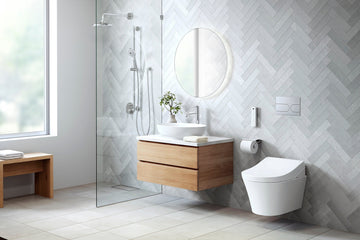In the rapidly evolving world of bathroom technology, the maintenance of smart toilets has become a crucial topic. As these toilets blend cutting-edge technology with everyday convenience, ensuring their longevity and optimal performance is paramount. Whether you're a homeowner or part of the industry QA team, understanding the nuances of maintaining these modern marvels can save you both time and money.
Smart toilets are not just about luxury; theyre about efficiency and hygiene. With features like automatic flushing, bidet functions, and even air purification, they offer a seamless bathroom experience. However, like all sophisticated technology, they require regular upkeep to function at their best.

Understanding the Basics of Smart Toilet Maintenance
At the heart of any well-functioning smart toilet lies regular maintenance. Its essential to keep these toilets in pristine condition to avoid malfunctions and costly repairs. Regular cleaning is the first step. Given the intricate designs and electronic components, its important to use gentle cleaning agents that wont damage the sensors or delicate parts.
Another critical aspect is to inspect the water supply and drainage systems regularly. Any blockage or leakage can affect the toilet's performance, leading to inefficient water use and increased utility bills. Regularly checking these systems can prevent larger issues down the line.
Key Components to Focus On
When it comes to the maintenance of smart toilets, certain components demand particular attention. The bidet nozzle, for instance, should be cleaned frequently to ensure hygiene. Most smart toilets have a self-cleaning feature, but manual cleaning once in a while ensures thorough sanitation.
The electronic sensors, often the most sensitive parts of a smart toilet, should be dusted and checked for responsiveness. Malfunctioning sensors can lead to issues like improper flushing or ineffective bidet functions.
Common Issues and How to Address Them
Even with regular care, issues can arise. One common problem is the toilet not flushing properly. This can be due to sensor misalignment or a clogged drainage system. Resetting the sensors or using a mild drain cleaner can often solve these issues.
Another frequent issue is water leakage. This is often due to faulty seals or connections in the plumbing. Regularly inspecting these areas and replacing worn-out parts can prevent water wastage and potential damage.
Advanced Tips for Industry QA Teams
For those in the industry QA sector, maintaining smart toilets extends beyond basic upkeep. It's about ensuring these toilets meet the highest standards of performance and safety. Regular performance audits and checks are essential. Using diagnostic tools to assess the functionality of the electronic components can identify potential issues before they become significant problems.
Moreover, keeping abreast of the latest advancements in smart toilet technology can provide insights into new maintenance techniques and tools. For example, many manufacturers now offer apps that help monitor the condition of smart toilets remotely, alerting users to potential issues.
Learning from Experts and Case Studies
Another valuable resource for QA professionals is learning from case studies and expert recommendations. Websites like New Scientist offer insights into the latest trends and technologies in the world of smart toilets. Understanding these trends can provide a competitive edge in ensuring top-notch maintenance practices.
Additionally, exploring internal resources such as Are Smart Toilets Worth It? and Life Span of Innovative Toilet Systems can deepen your understanding of their functionality and longevity.
Conclusion
The maintenance of smart toilets is an ongoing process that requires attention to detail and a proactive approach. By understanding the essential components, common issues, and advanced techniques, both homeowners and industry professionals can ensure these high-tech devices continue to operate smoothly and efficiently. As technology evolves, so too should our approaches to maintenance, ensuring that smart toilets remain a staple of modern convenience and hygiene.

FAQ
What are the most common problems with smart toilets?
Common issues include malfunctioning sensors, improper flushing, and water leakage. Regular maintenance can help prevent these problems.
How often should smart toilets be serviced?
Its recommended to perform basic maintenance monthly and a thorough service check annually to ensure optimal performance.
Can I use regular cleaning agents on smart toilets?
Its best to use gentle, non-abrasive cleaners to avoid damaging the electronic components and sensors.
This article contains affiliate links. We may earn a commission at no extra cost to you.






